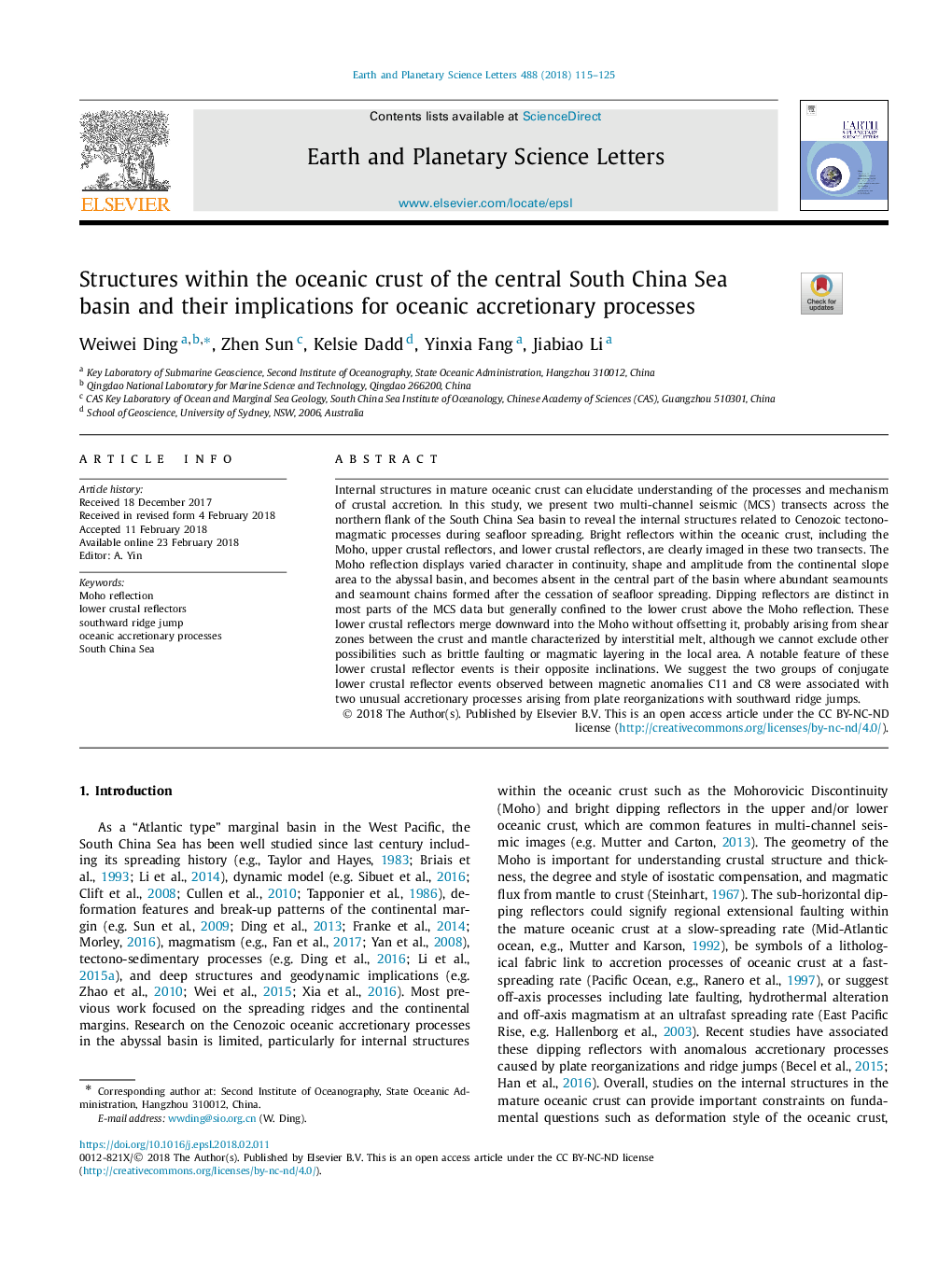| Article ID | Journal | Published Year | Pages | File Type |
|---|---|---|---|---|
| 8907049 | Earth and Planetary Science Letters | 2018 | 11 Pages |
Abstract
Internal structures in mature oceanic crust can elucidate understanding of the processes and mechanism of crustal accretion. In this study, we present two multi-channel seismic (MCS) transects across the northern flank of the South China Sea basin to reveal the internal structures related to Cenozoic tectono-magmatic processes during seafloor spreading. Bright reflectors within the oceanic crust, including the Moho, upper crustal reflectors, and lower crustal reflectors, are clearly imaged in these two transects. The Moho reflection displays varied character in continuity, shape and amplitude from the continental slope area to the abyssal basin, and becomes absent in the central part of the basin where abundant seamounts and seamount chains formed after the cessation of seafloor spreading. Dipping reflectors are distinct in most parts of the MCS data but generally confined to the lower crust above the Moho reflection. These lower crustal reflectors merge downward into the Moho without offsetting it, probably arising from shear zones between the crust and mantle characterized by interstitial melt, although we cannot exclude other possibilities such as brittle faulting or magmatic layering in the local area. A notable feature of these lower crustal reflector events is their opposite inclinations. We suggest the two groups of conjugate lower crustal reflector events observed between magnetic anomalies C11 and C8 were associated with two unusual accretionary processes arising from plate reorganizations with southward ridge jumps.
Keywords
Related Topics
Physical Sciences and Engineering
Earth and Planetary Sciences
Earth and Planetary Sciences (General)
Authors
Weiwei Ding, Zhen Sun, Kelsie Dadd, Yinxia Fang, Jiabiao Li,
